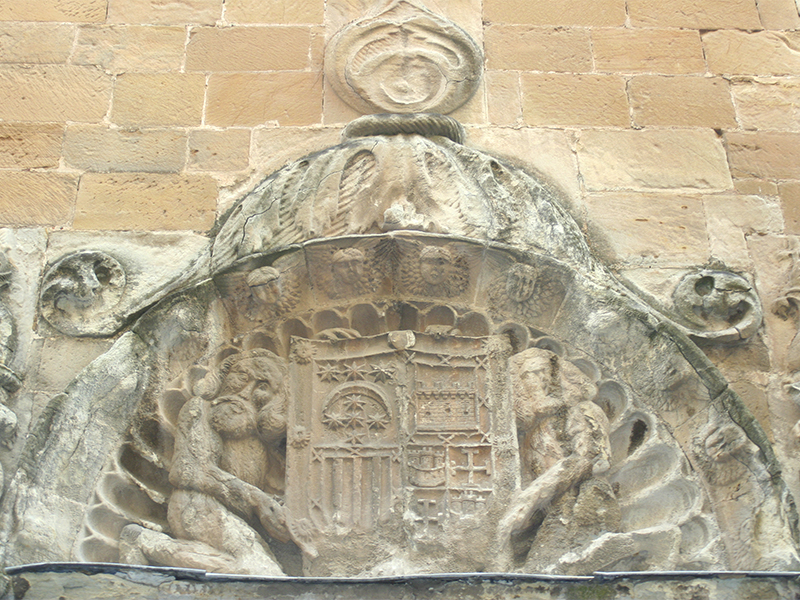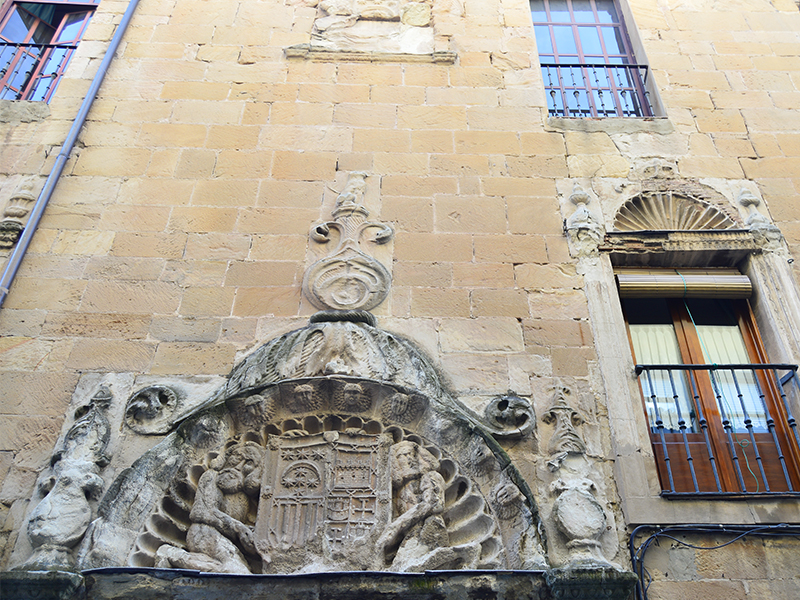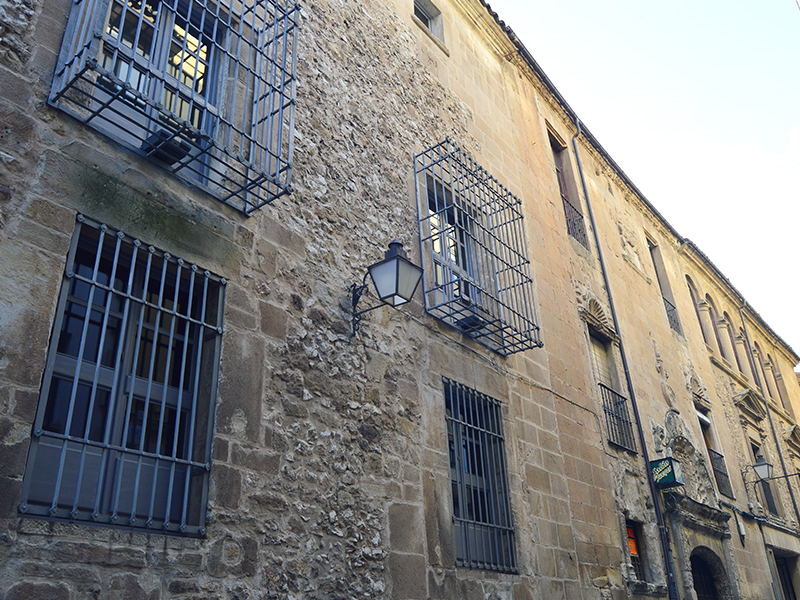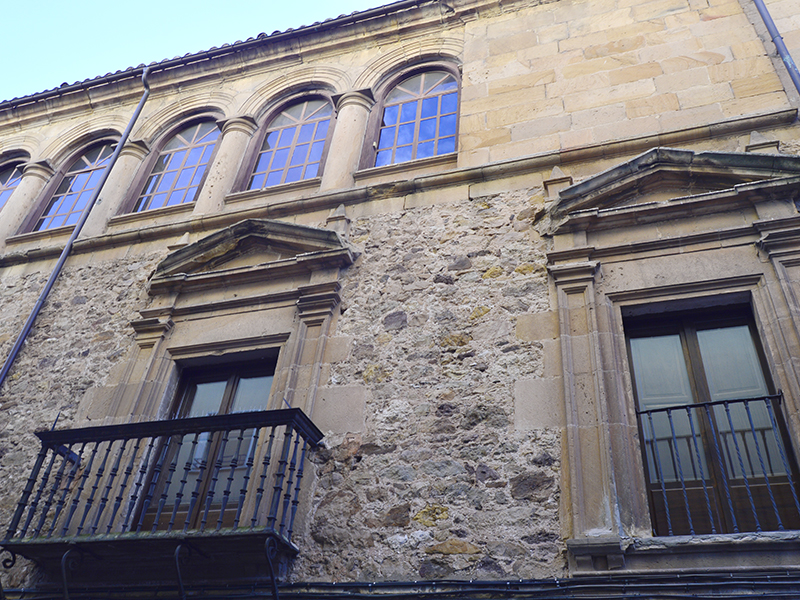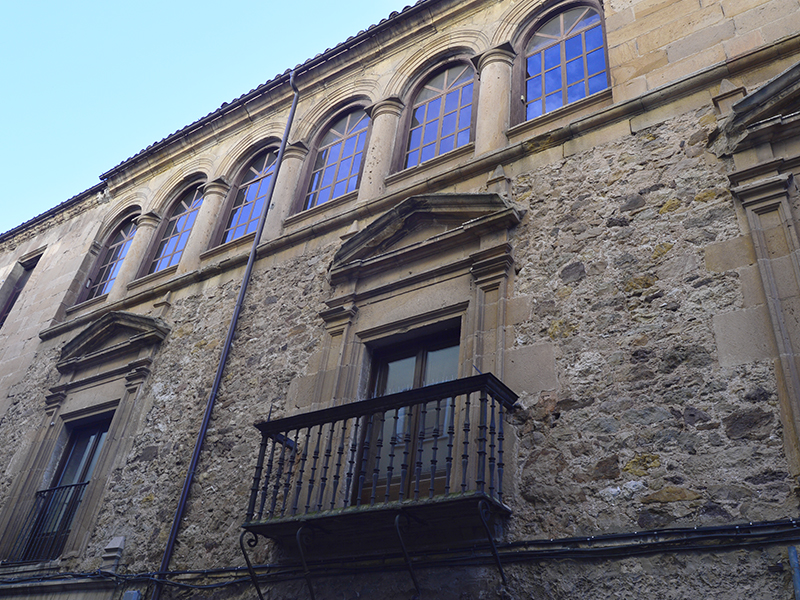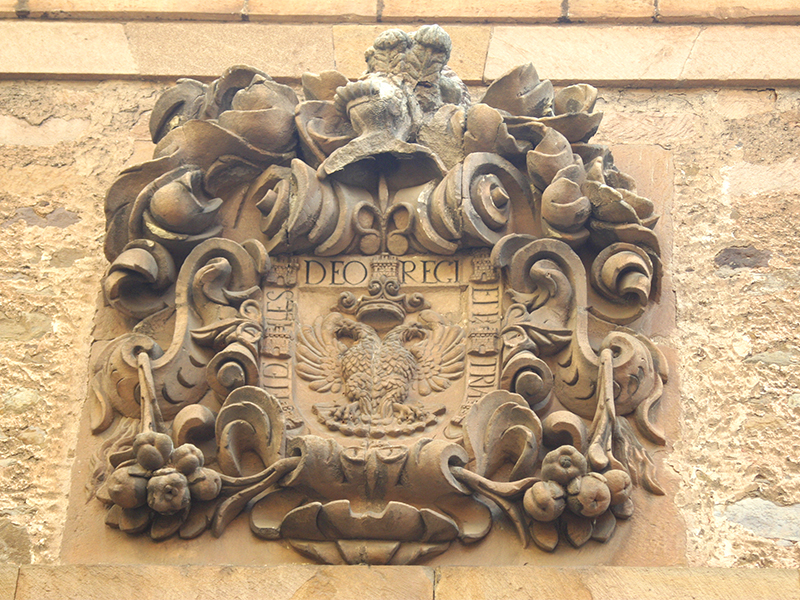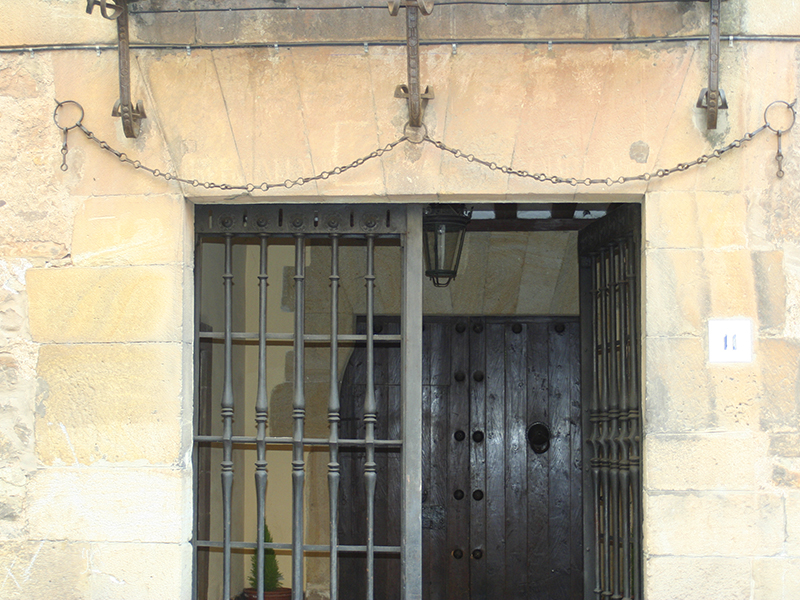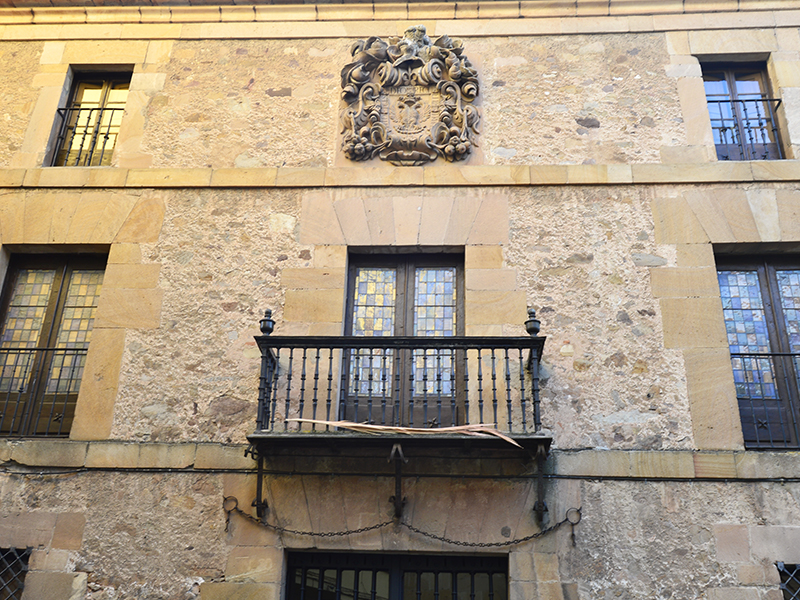NOBLE PALAIS
PLATERESQUE ART À ADUANA VIEJA
HISTOIRE
Il a été construit par la famille des Castejones, très important à Agreda, au XVIe siècle et construit dans les murs, comme c'était la coutume alors, le long des murs et ses portes, comme les nobles ont acquis l'obligation de le défendre. Pendant longtemps, il a été connu sous le nom de la Maison des Ongles par avoir une porte en métal épais ornements en forme d'ongle. Il est maintenant un logement privé.
LE BÂTIMENT
Elle a une façade de sillerie, articulée en trois étages marquée par une petite ouverture au rez-de-chaussée, des fenêtres déchirées sur la partie supérieure et des ouvertures avec des coques comme décor dans la partie centrale. Un portail avec arc segmentaire et les armoiries des propriétaires détenus par deux sauvages complètent la vision. A gauche se trouve une fenêtre avec des moulures de jambages et un linteau en forme de coquille et au dernier étage deux fenêtres du même modèle. C'est, avec le palais voisin des rivières et Salcedo, le meilleur exemple de plateresque dans la capitale.
Palace of Don Diego Solier
The little brother of the Palace of Los Condes de Gómara
HISTORY
It was built by Don Diego de Solier - Corregidor of Soria between 1607- 1599 and belonging to one of the Twelve Lineages, the saviors in 1598.
THE BUILDING
It consists of a facade in which the ashlar masonry mix. On the first floor windows are decorated with moldings on the sides and large pediments at the top. The upper floor consists of a long run gallery with arches and Tuscan columns.
Palace of the Vizconde de Eza or San Clemente
Noble house and royal accommodation S. XII
HISTORY
It was built in the XII by one of the most influential noble families of the city, belonging to the lineage of San Clemente century, which in turn belonged to the lineage of Chancilleres, one of the Twelve Lineages; between also held the titles of Vizconde de Eza already in the twentieth century, hence the Palacio receive both names. In the nineteenth century this family married into other noble from Navarre, the Marichalar. Luis de Marichalar, grandfather of the current owner, was minister of Alfonso XIII, whose heirs today the palace belongs.
THE BUILDING
From the simple masonry facade highlights the remarkable family shield, XVIII century, with Baroque ornamentation and complicated in which a double-headed eagle surrounded by the family motto “Fidele Deo, Regi et Patriae” is represented ( "Faithful to God, King and Fatherland").
Chains under the balcony are a symbol that attests that the place has slept a king. In this case it was Alfonso XIII, whose cabinet was a minister of the Vizconde de Eza and spent the night when he came to the inauguration of Numantino museum in 1919.








